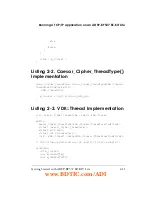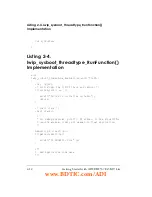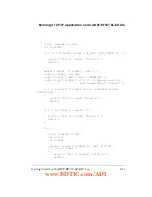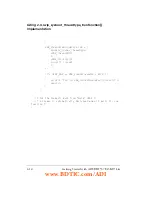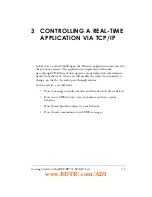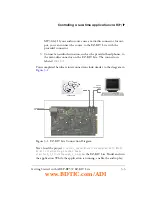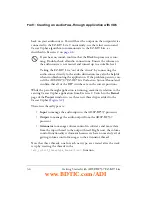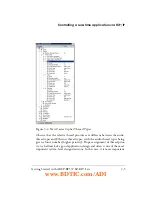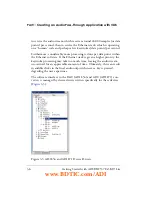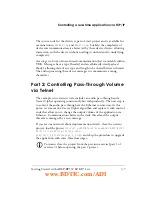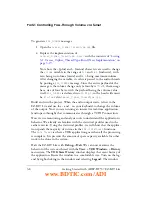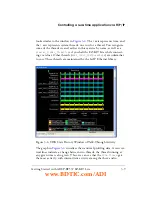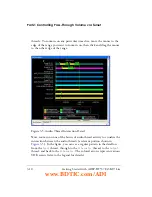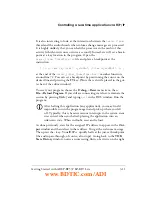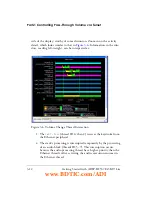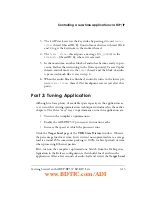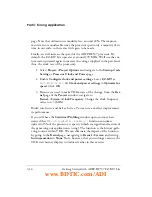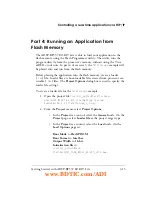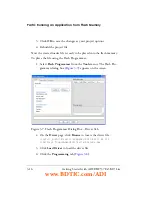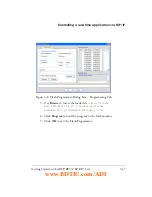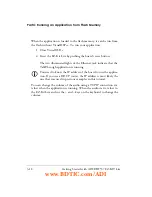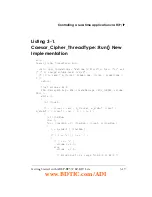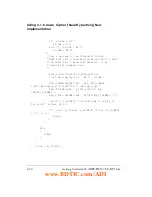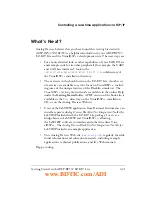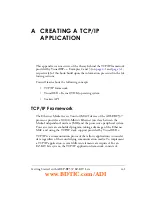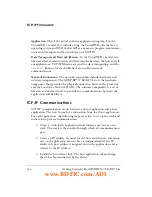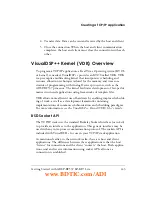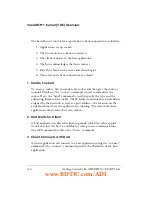
Getting Started with ADSP-BF537 EZ-KIT Lite
3-11
Controlling a real-time application via TCP/IP
It is also interesting to look at the interaction between the
Caesar Cipher
thread and the audio threads when volume change messages are processed.
It is highly unlikely that you can halt the processor in the midst of this
activity (which occurs once or twice a second). Instead, we will set a break-
point at a key location in the program. Open the
Caesar_Cipher_ThreadType.cpp
file and place a breakpoint at the
instruction
if ( 0 >= send (m_iSocket, m_vOutBuf, strlen (m_vOutBuf), 0) )
at the end of the
Caesar_Cipher_ThreadType::Run()
member function,
around line 72. You can set a breakpoint by positioning the cursor on the
desired line and pressing the
F9
key. (Note the red circle placed in the gut-
ter bar of the editor window).
To reset your program, choose the
Debug
–>
Reset
menu item, then
File
–>
Reload Program
. If you still are connecting via telnet, terminate the
session by pressing
Ctrl+]
and typing
quit
in the DOS window. Run the
program.
L
After halting this application (any application), you may find it
impossible to run the program again and pick up where you left
off. Typically, this is because various interrupts in the system went
un-serviced when you halted, placing the application into an
unknown state. When in doubt, reset and reload.
As done previously, wait for the assigned IP address to appear in the
Out-
put
window and then telnet to that address. You get the welcome message.
Then press the
+
key. Vi+ quickly halts at the just-set breakpoint
(the audio pass-through, of course, also stops). Going back to the
VDK
State History
window, notice an interesting flurry of activity on the right
www.BDTIC.com/ADI

